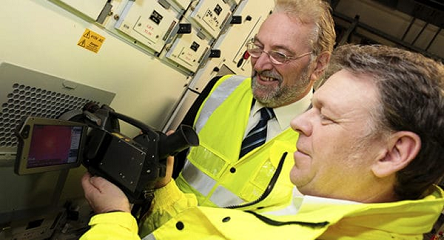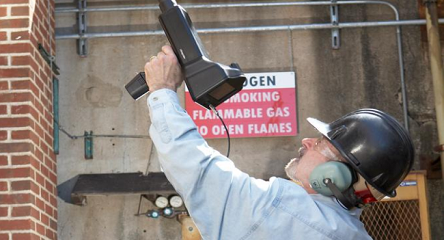Regular inspections of production equipment are essential in preventive maintenance. Early detection of damage or signs of wear leads to increased plant availability and also saves enormous costs.
Is the steam trap working correctly or is it defective? Digital ultrasonic testing technology provides the answer. Energy losses are reduced and process stability is increased.
Steam traps that no longer close prevent optimum heat transfer and thus have a significant impact on the energy efficiency, cost-effectiveness and process stability of a steam system. Blocked steam traps and thus more condensate in the steam system, on the other hand, lead to accelerated corrosion, affect process and product quality and, in the worst case, can cause dangerous water hammer and unplanned downtime. Regular steam trap inspection is therefore essential.
How much does a defective trap cost?
Experts estimate that over 20 percent of the steam produced is lost due to leaking steam traps. Through just one leaking steam trap (thermodynamic bimetallic, DN25, system pressure 11 bar), approx. 22 kg of steam per hour and thus approx. 190 t per year are lost (at 8,400 operating hours per year). With generation costs of 35 €/t steam, this loss adds up to approx. 6,600 € per year. Digital ultrasonic testing technology helps the maintenance engineer to detect and replace defective traps.
Before the inspection process, the type and operating principle of the steam traps should be known, as well as the system pressure and temperature. In open systems, even the first impression can tell a lot about the condition of the traps. An indication of a defect could be, for example, the absence of condensate at the condensate outlet. The inspector obtains a more precise picture with the aid of combined temperature and ultrasonic measurement. Depending on the design, a functioning trap opens and closes continuously or discontinuously and generates characteristic ultrasonic signals during this process.
Broadband ultrasonic analysis
Temperature measurement alone is not sufficient for reliable condition assessment. To determine a leaking steam trap, a broadband recording of the ultrasonic signal in the frequency range from 20 to 100 kHz is needed. For the evaluation of the trap, it is important to know which type of trap is being tested.

Steam traps have different noise characteristics depending on type, manufacturer and point of installation location. Whereas testers used to have only an analogue, acoustic signal to evaluate the traps, today it is easier to look at the touch screen of the digital tester. The broadband spectrogram from 20 to 100 kHz makes it much easier to analyse the condition.
For more information, check out this video.







